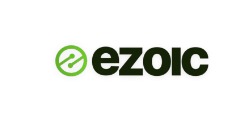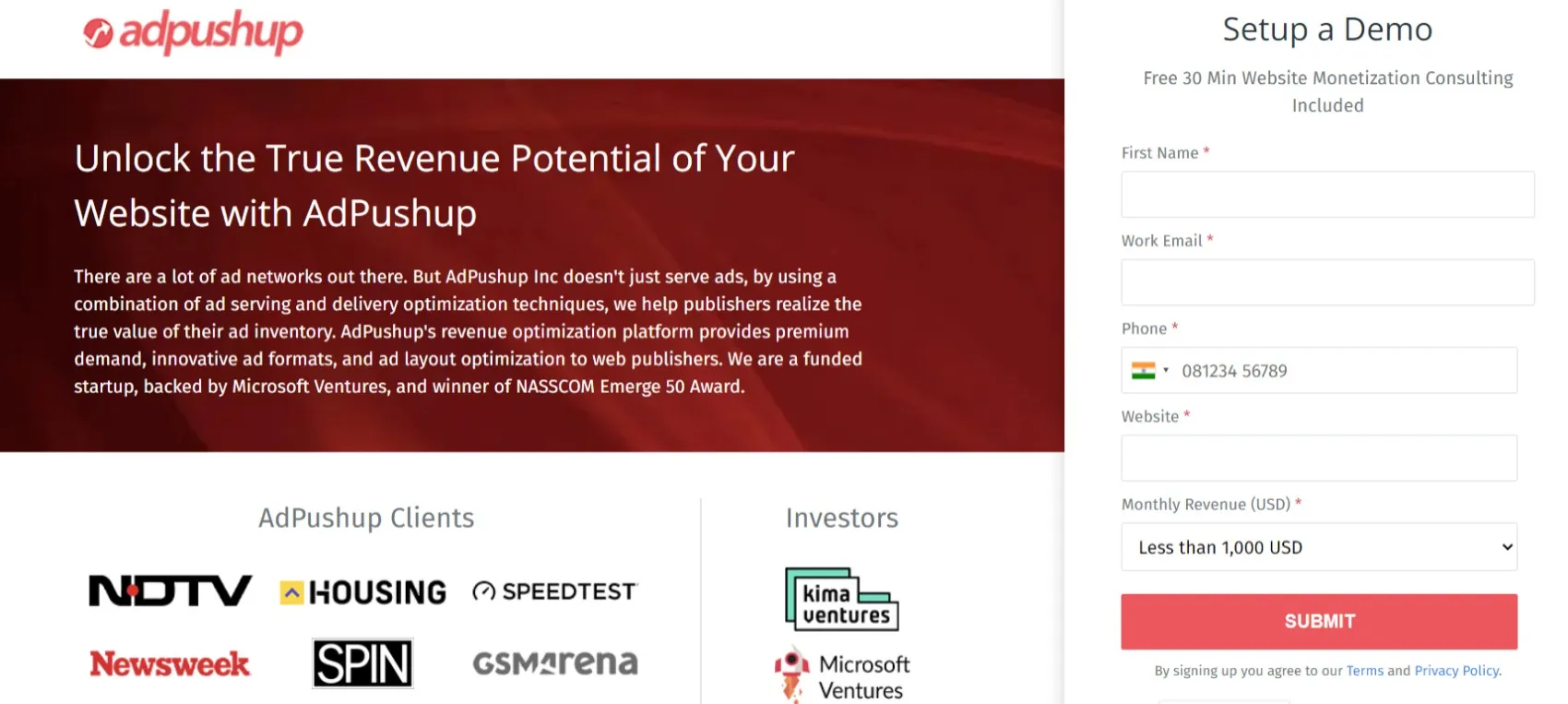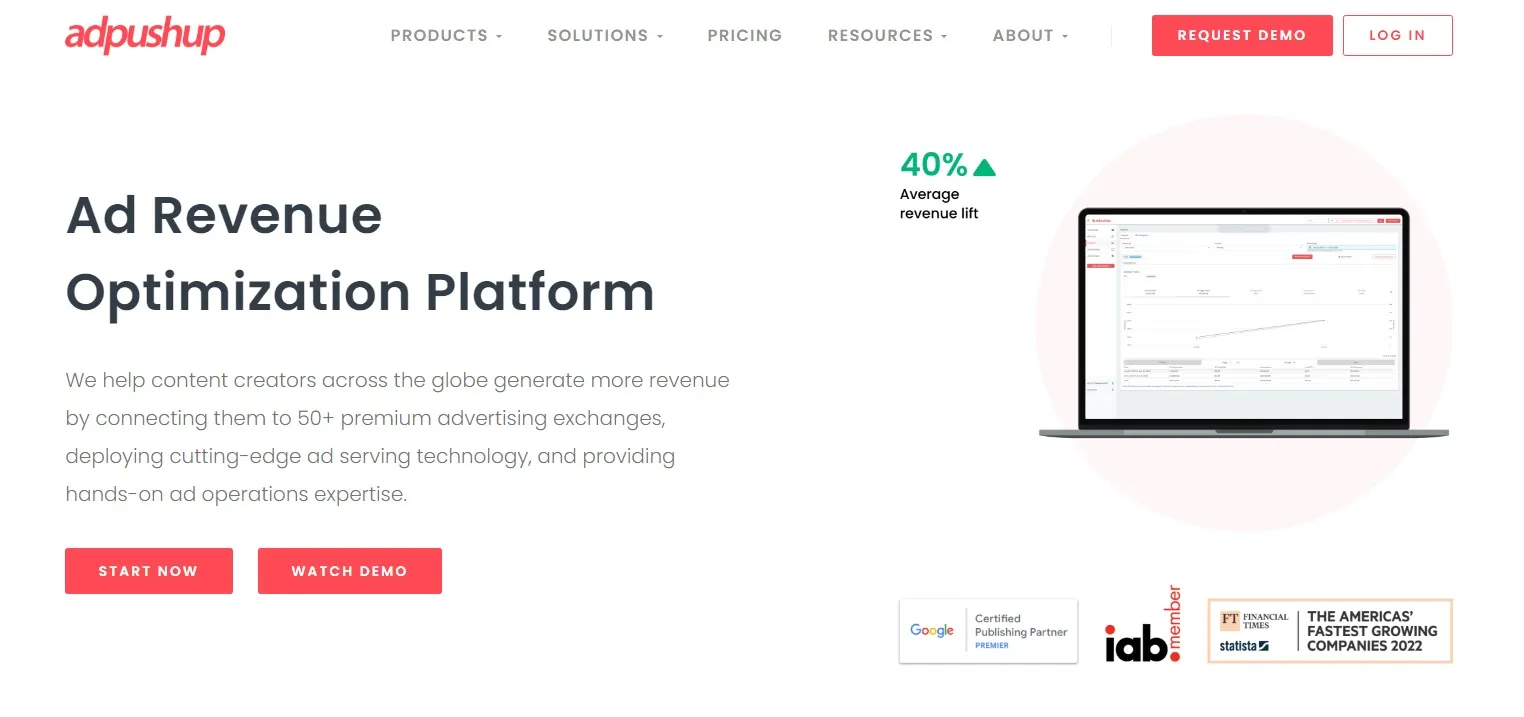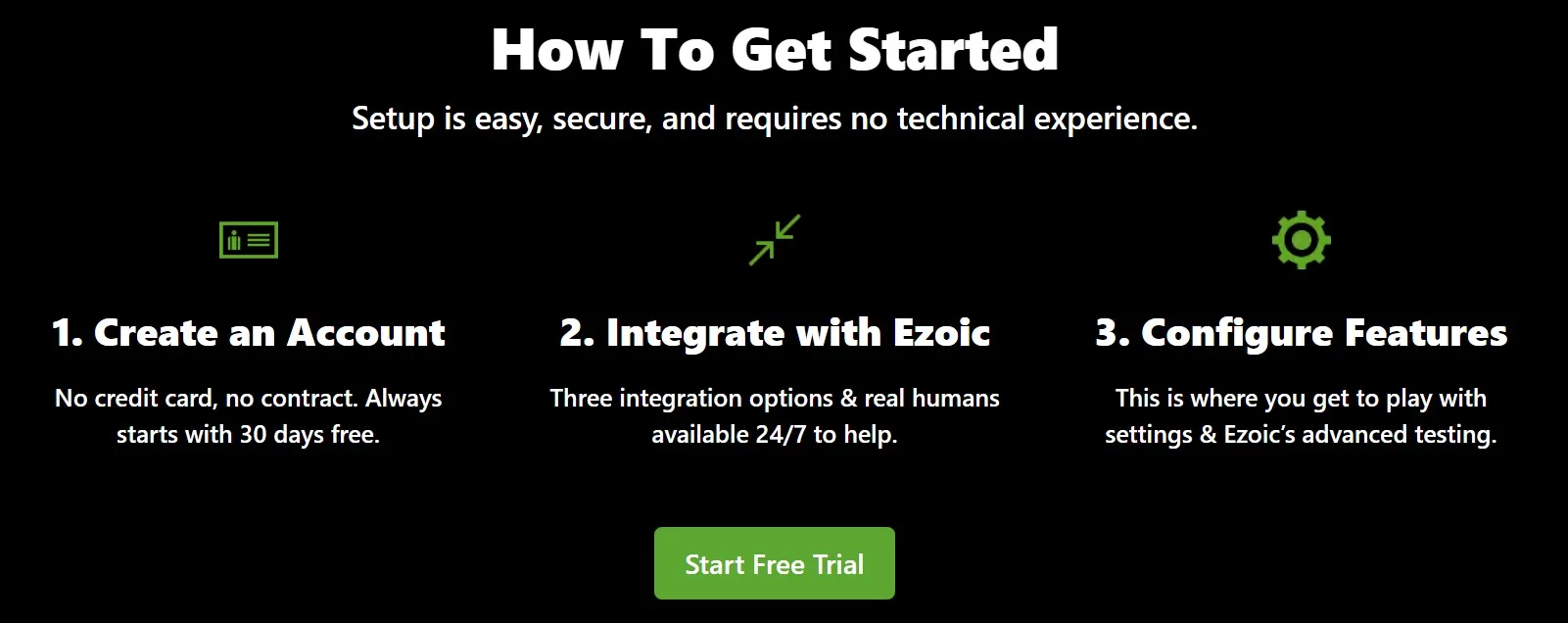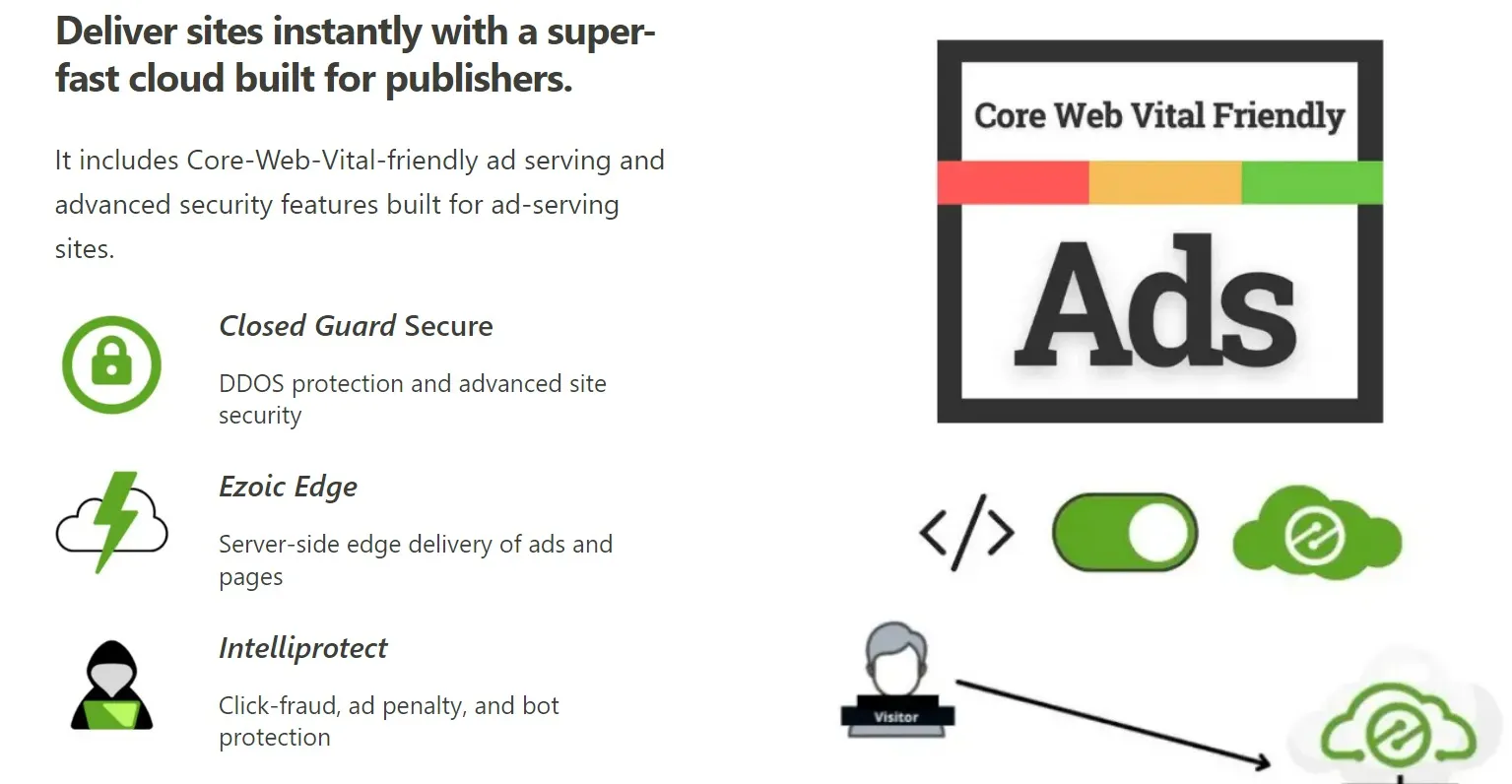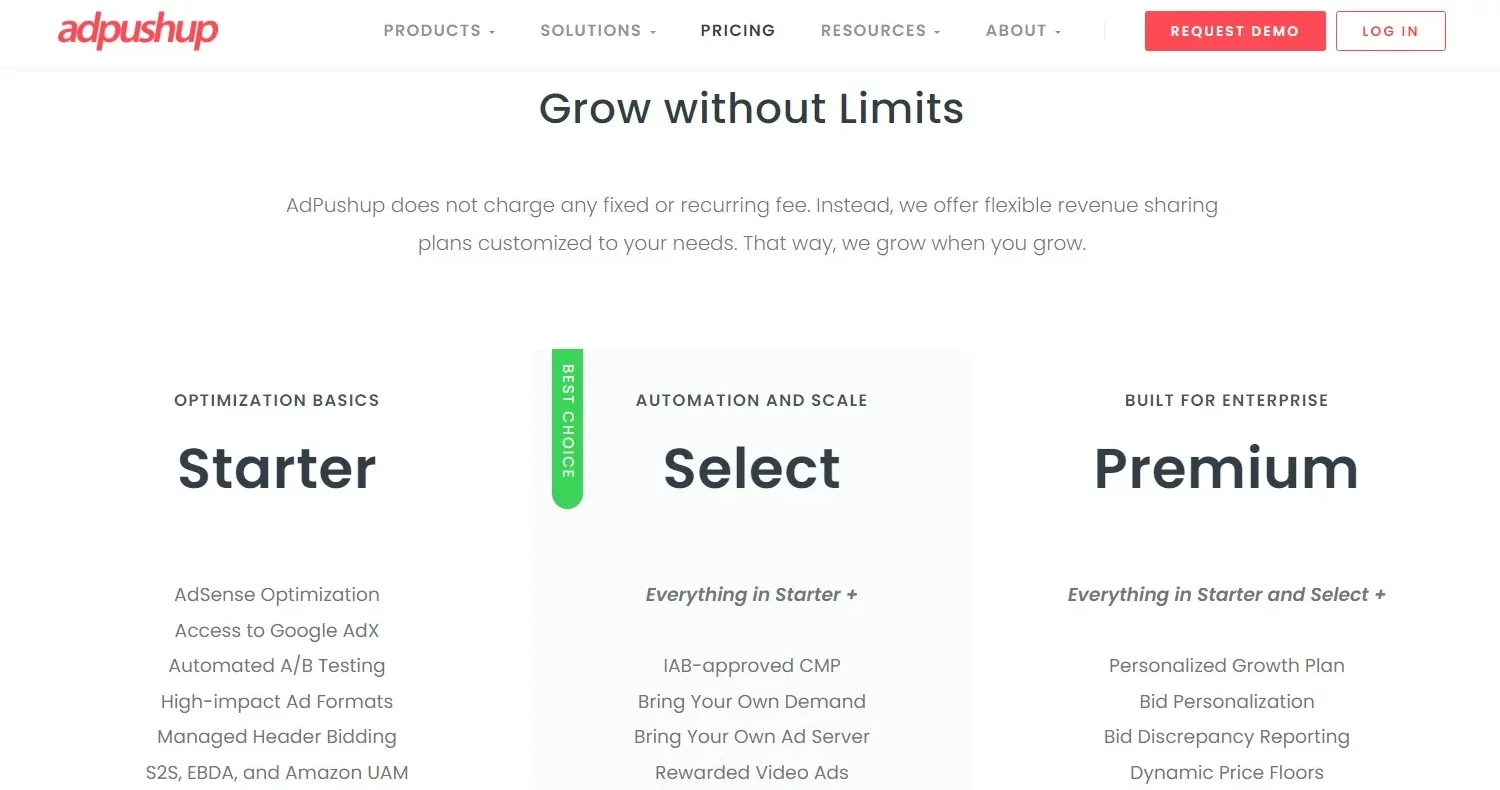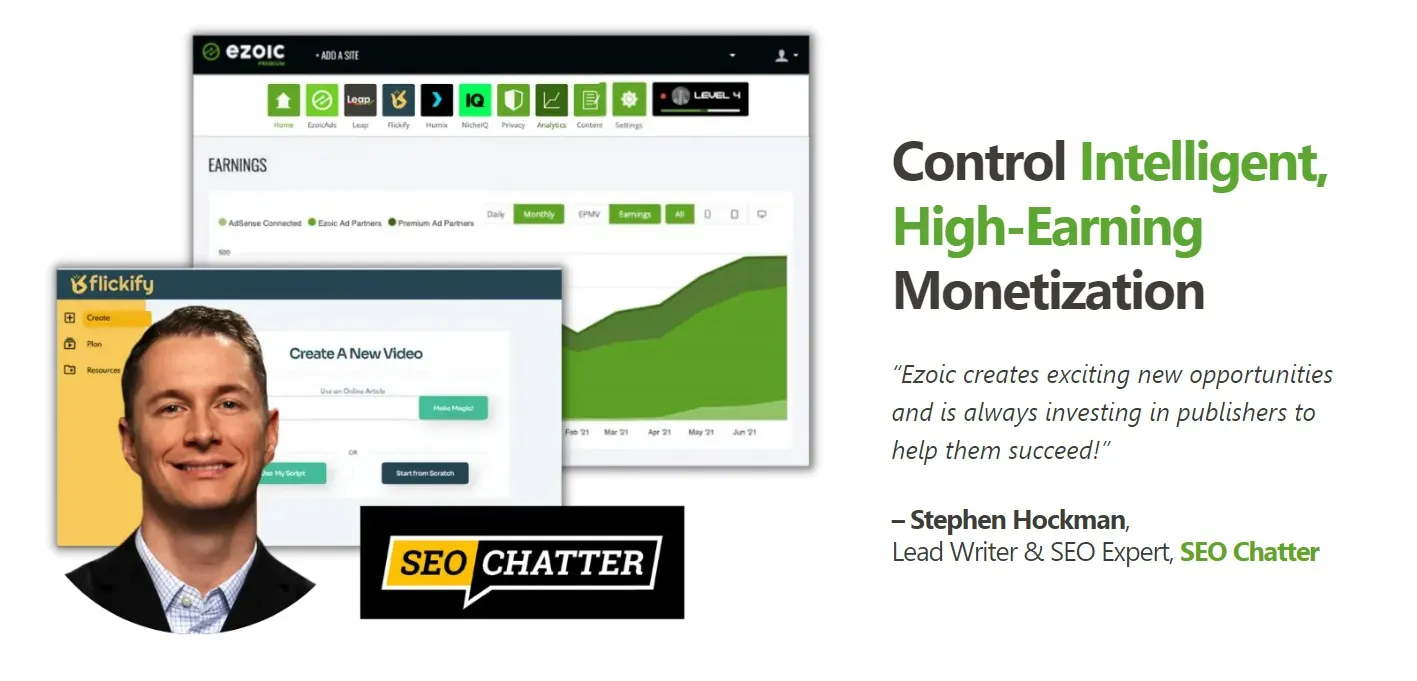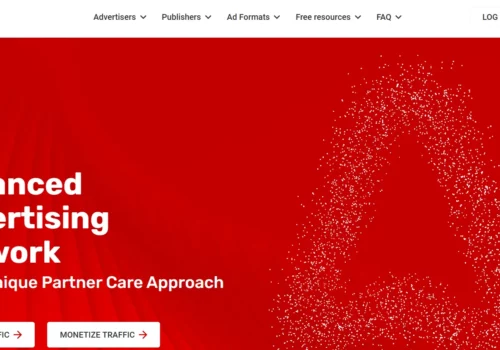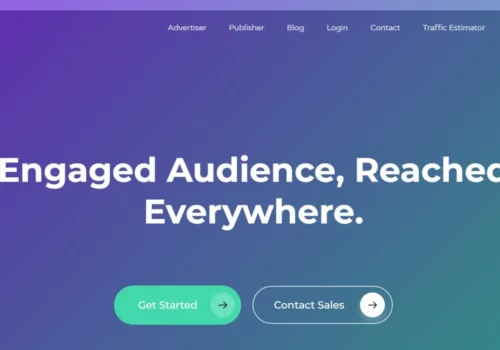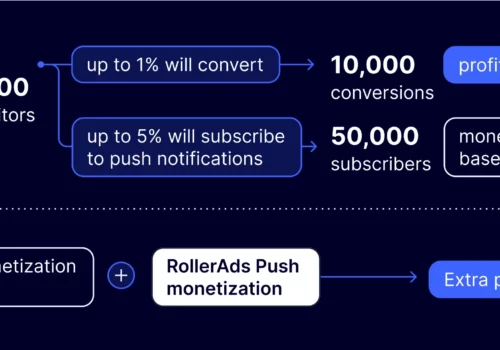Be it iOS vs. Android, Mac vs. Windows, or Chrome vs. Firefox, there are always two (or more) industry players competing with each other to give the best value to end-users. It’s similar in the world of ad tech.
Being a blogger myself, I have also tried my options, hoping these tools will help improve my ad revenue as they promise. In this post, I’ll share my experience with Ezoic and AdPushup一both are ad revenue optimization platforms, and why I chose to shift from Ezoic to AdPushup.
Both platforms have their strengths and limitations. I know a lot of fellow bloggers who use Ezoic. I’m here to make my case for AdPushup and explain why I found it a better fit.
Note: This post is based on my personal experience, and the use case may vary for different publishers.
[ez-toc]AdPushup Vs Ezoic: Which One Is Better? (2024)
AdPushup Overview
The AdPushup helps people earn more money by making content on the internet. So, what makes AdPushup special?
First, Google really likes it because it’s great at helping publishers – that’s people like us who create and share stuff online.
AdPushup works with over 50 top-notch ad places, meaning your content gets connected to some really good ads. Plus, they use the latest technology to make sure these ads work well on your site.
The best part? They have a team of experts who are always there to help you out. So, if you want to make more money from your website or blog, AdPushup could be a big help!
Ezoic Overview
Ezoic is a super smart Ad Network that’s all about making your online content better.
Imagine you have a website or a blog, and you want more people to visit it, and at the same time, you want to earn more money from it. That’s where Ezoic comes in!
So, Ezoic is this amazing platform that has even won awards from Google. It was created because making decisions for your website can be really tough.
There’s so much to think about – like how to make your site perform better, get more visitors, and how to balance everything.
Ezoic makes all this easier by using AI – that’s artificial intelligence. It’s like having a super-smart helper that figures out what each person visiting your site will like best.
This means visitors have a better time on your site, and you also get to earn more money without having to guess what works and what doesn’t.
Over 10,000 online publishers are using Ezoic because it takes away the guesswork. It’s like having a magic wand that boosts your site’s performance and helps it grow faster.
So, if you’re looking for a way to make your website awesome, Ezoic might be just what you need!
AdPushup Vs Ezoic: Comparison of Other Features
For me, setup is one of the most important parts of working with a new tech vendor. How easy or painful the setup process is usually also indicates how the entire experience will be.
But when your revenue is at stake, there are other things to consider as well.
1. Ad Network Neutrality
In my experience, AdPushup is more demand-agnostic. Based on publisher fit and requirements, they focus on either optimizing the AdSense account, setting up AdX and header bidding, or both.
AdPushup treats all demand partners (including my AdSense) equally and sends the traffic to the better-performing demand partner. Ezoic, on the other hand, focuses on generating revenue through AdX and header bidding.
Ezoic users may notice that the platform does not optimize or incentivize their AdSense accounts. This may be fine for publishers already on AdX.
However, some websites may be better off with only AdSense optimization, as the CPM model in AdX and header bidding may not be the best fit for them. It is also interesting to A/B test AdSense vs. AdX on Adpushup.
Ezoic is a more AdX-compatible platform, while AdPushup is good to have for both AdX and non-AdX publishers, knowing that not all AdSense publishers are active AdX publishers.
2. Data and Reporting
Ezoic shows EPMV (“earning per thousand visitors”) as the primary metric in their reporting. They try to push this metric a lot, and while it is useful, the reporting system is otherwise pretty bare bones.
I had a hard time comparing my existing metrics with their new metric.
This metric was in beta in AdPushup reporting, so new publishers should be able to leverage that metric fully in some time. One thing Ezoic has going for itself is the Google Analytics integration, which is currently a manual process in AdPushup.
However, AdPushup’s reporting system has 9 dimensions and 8 filters, while Ezoic has only two.
As a user, the extra reporting filters help me view custom reports based on exactly what I need to know.
For instance, if I want to analyze demand partner performance, it’s easy to create a network-wise revenue report in AdPushup. Fetching a use case-specific report is daunting in Ezoic.
3. Advertiser Demand
One of AdPushup’s strongest points, according to me, is its industry relationships and availability of the bring-your-own-demand option. Their demand network help publishers access over 50 demand partners and over 30,000 advertisers.
It has partnerships with top-tier networks and exchanges, including Google AdX, AppNexus, Rubicon, and Criteo, among others.
They also help publishers onboard their existing demand partners to the AdPushup platform. Ezoic also has some great partnerships to showcase. However, AdPushup’s flexibility in being able to onboard existing demand partners gives it an upper hand here.
4. DIY vs. Managed
A do-it-yourself model might sound interesting. But with anything as complex as ad tech, users usually need human help at some point. For me, AdPushup aced their support game.
Their ad ops team is practically available 24/7 to solve any query.
I was assigned a dedicated account manager who did all the legwork for me with utmost expertise一getting the setup ready, creating ad layouts, optimizing AdSense, sending performance reports, and advising whenever needed.
I don’t have much to cover here for Ezoic. It is a self-service platform with limited support. I can’t help but mention how important it is to receive help from an actual person when you’re struggling with something.
AdPushup Vs Ezoic: Pricing and Transparency
AdPushup follows a revenue-sharing model wherein they charge a certain revenue share from the publisher’s overall revenue. Ezoic’s subscription-based pricing model, on the other hand, raises some questions.
AdPushup doesn’t provide specific pricing information on its website, as its pricing can vary depending on the specific needs and requirements of each publisher.
They offer flexible revenue-sharing plans, which means they take a percentage of the additional revenue they help you generate through their services.
The exact percentage or pricing structure would be determined through a custom proposal based on your website’s traffic, revenue potential, and the features you require.
Ezoic’s pricing is simply based on the publisher revenue slab. So what’s the catch?
Case 1 → Publisher revenue = Up to $1000/mo | Pay amount to Ezoic = $49/mo
This is the base plan based on which Cases 2 and 3 are calculated.
Case 2 → Publisher revenue = Up to $2500/mo | Pay amount to Ezoic = $124/mo
EXPLANATION: A 150% increase in publisher revenue ($1000 to $2500) leads to a 153.06% increase in the publisher’s price for Ezoic ($49 to $124). However, if a publisher’s revenue is just $1500 (the publisher will still have to enter the $2500 slab), he/she is having just 50% increase in revenue but yet has to bear a 153.06% higher cost, i.e., $124/mo for a website earning $1500/mo.
Case 3 → Publisher revenue = Up to $10,000/mo | Pay amount to Ezoic = $498/mo
EXPLANATION: A 900% increase in publisher revenue (f$1000 to $10,000) leads to a 916.33% increase in publisher’s price for Ezoic ($49 to $498). However, if a publisher’s revenue is just $7500 (the publisher will have to enter the $10,000 pricing slab), he/she is having a 650% increase in revenue but yet has to bear a 916.33% higher cost, i.e., $489 for a website earning $7500/mo.
AdPushup Vs Ezoic: Approval Requirements
AdPushup: To be approved by AdPushup, your website needs to be earning at least $5,000 every month. This shows that your site is already doing well in terms of making money.
Also, your site should have high-quality content and a good design. This means your articles or posts should be well-written and interesting, and your website should look nice and be easy to use.
Ezoic: Ezoic’s requirements are a bit different. Your website needs to have at least 10,000 page views per month, as recorded in Google Adsense.
This is about how many people are visiting and looking at your site. Ezoic also looks for websites that are of good quality and not spammy.
So, your site should offer useful or interesting information to visitors and not just be full of ads or irrelevant content.
AdPushup Vs Ezoic: User Reviews
AdPushup Vs Ezoic: Pros and Cons
| AdPushup Pros | AdPushup Cons | Ezoic Pros | Ezoic Cons |
|---|---|---|---|
| Allows detailed testing of ad layouts for optimal performance. | Price Generally, it is more expensive than some other ad management platforms. | Great for beginners, with an easy-to-navigate interface. | Some users find the ad placements too aggressive, which could affect user experience. |
| Offers tools to improve website layout for better user experience and ad revenue. | Best suited for those with some technical background to fully utilize its features. | Offers additional tools for content testing and SEO. | There can be an impact on site speed, which is crucial for user experience and SEO. |
FAQs
💰 Which platform offers better revenue optimization for publishers, AdPushup or Ezoic?
Both platforms aim to optimize revenue, but the effectiveness may vary depending on the specific needs and traffic of your website. It's advisable to try both to see which performs better for you.
⏳ How long does it take to see improved ad revenue results with AdPushup and Ezoic?
The time to see improved results can vary, but typically, you should start noticing improvements within a few weeks to a couple of months of using these platforms.
🖥️ Do AdPushup and Ezoic support different ad types and formats?
Both platforms support various ad types and formats, including display ads, native ads, and more.
💡 What kind of customer support and assistance can I expect from both platforms?
Both AdPushup and Ezoic provide customer support and assistance through email and chat. They also have knowledge bases and resources to help you get started and troubleshoot issues.
🔒 How do AdPushup and Ezoic ensure ad quality and security for my website visitors?
Both platforms have measures in place to monitor and maintain ad quality. They also prioritize user security and adhere to industry standards to prevent malicious ads from being displayed on your site.
Quick Links:
Final Take: AdPushup Vs Ezoic 2024
Taking both features and costs into account, I was able to make my switch from Ezoic to AdPushup.
Value additions like a dedicated account manager, partner-wise custom reports, AdBlock recovery, and a clear revenue-sharing model compelled me to make the shift.
Recently, AdPushup released its version 2.0 after going through a product overhaul. The version has deeper reporting, ads.txt authenticator, and AdSense unit automation, among other improvements.
All these features make AdPushup a more robust revenue optimization platform for publishers.
You can explore how AdPushup works for you by getting started here.


